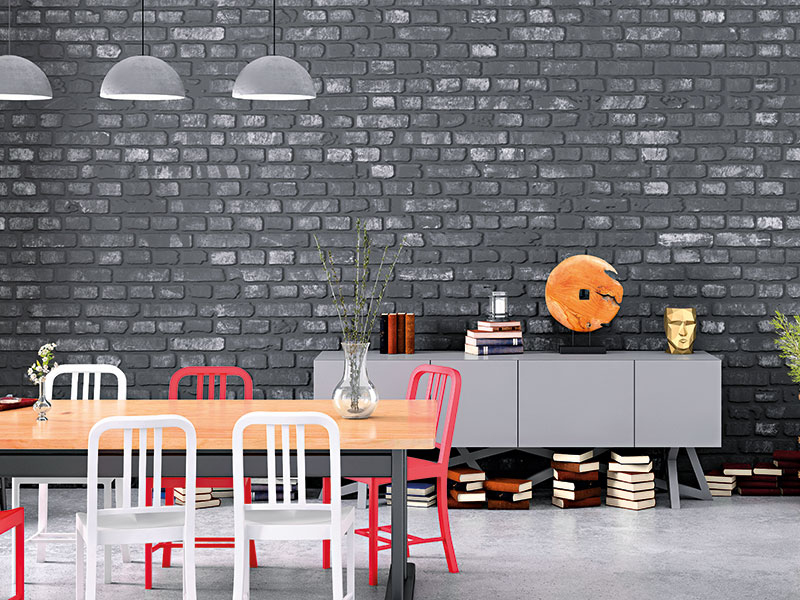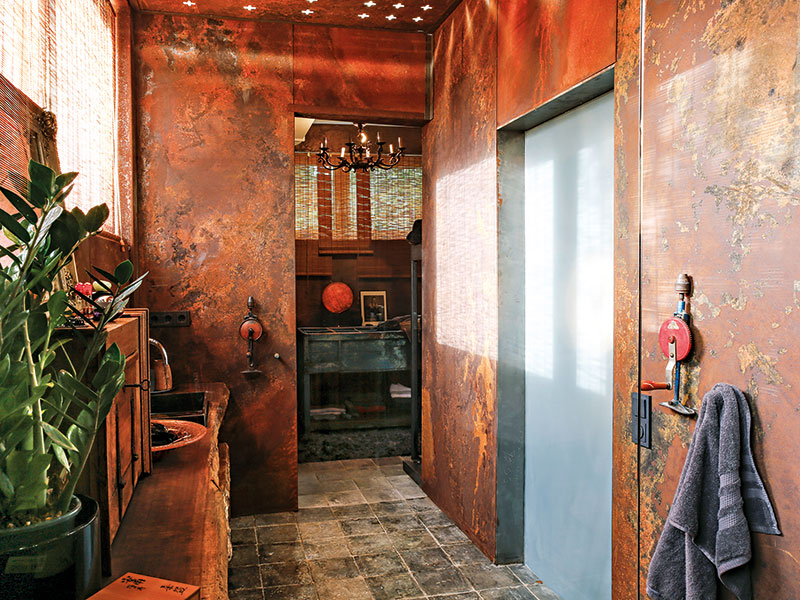

Paul Rand, the mastermind of advertising and graphic design responsible for creating some of the world’s most celebrated corporate logos, is famously remembered for saying: “Everything is design.” Rand understood that good design is more than a superficial amusement – it is everywhere and, as such, is intrinsically linked to just about everything. Countless factors dictate the ebb and flow of interior design in particular, but in recent years one of its most prominent drivers has been the health of the economy.
In times of recession, when consumers become more conservative with their spending, designers seize the opportunity to take bold risks. “Design is the ultimate differentiator between products,” Penny Sparke, Director of Kingston University London’s Modern Interiors Research Centre, told European CEO. “You’ve perfected the technology. You’ve perfected the functionality. The only thing left to do is design something to make it appealing. So, absolutely, design does thrive in recession.”
Do it yourself
A stark example of this trend followed the decade-long economic downturn known as the Great Depression. After the US stock market crashed in 1929, half of the country’s banks failed, leaving as many as 15 million Americans unemployed. And as the population’s discretionary income dried up, the economic slump spread throughout the world.
But while consumers pinched their pennies, manufacturers were in fierce competition with one another, working to make their products the most interesting and attractive. “Rather than just buying a fridge, you bought a ‘bulbous, sculptural fridge’,” Sparke said. “It was kind of upping the ante in terms of consumerism.” As designers stressed practicality and affordability, Streamline Moderne styles took off, building on the popular Art Deco movement. This new wave of modernism did away with excess while emphasising clean, curving lines and industrial materials.
Even though young people entering the workforce faced dismal job prospects in 2008, they refused to allow the economic downturn to infringe on their aesthetic aspirations
With economics being just one of many factors playing into the constant mutation of design, tracing its impact is usually a little more nuanced than simply drawing a straight line from one particular recession to a specific design concept. That being said, Shashi Caan, CEO of the International Federation of Interior Architects/Designers (IFI), told European CEO that the rise of ‘shabby chic’ – a style known for its rustic, industrial aesthetic – was a “very direct implication” of the global financial crisis in 2008.
Kadie Yale, a design theorist who founded the Designology Cooperative, agreed with Caan’s assessment, explaining that even though young people entering the workforce at the time faced dismal job prospects, they refused to allow the economic downturn to infringe on their aesthetic aspirations.
In fact, in order to maintain the quality of life they had come to expect before the recession – a time in which consumerism had taken hold – Yale said consumers began to take up the mantle of design themselves, bringing about the rise of the do-it-yourself (DIY) movement. DIY subsequently manifested in TV shows and blogs that gave consumers back-to-basics tips on how to spruce up their interiors.
In 2010, Pinterest, the mother of all craft blogs, was born. “Pinterest was a huge part of [the growth of the DIY movement],” Yale said. “You could suddenly say, ‘Well, I don’t have any money, but I can make this thing for very cheap’.” The emergence of the DIY and maker movements led to the signature unfinished, handmade look of shabby chic designs.
An indomitable legacy
As the economy inched towards recovery and entrepreneurs snapped up cheap storefronts in city centres, the DIY approach became a sensible way for businesses to keep overheads low. Small, local shops embraced the rustic look of exposed flooring and brickwork to avoid expensive renovations, and savvy start-ups transformed exposed beams and piping from a money-saving technique into a must-have look.
While they were born out of necessity, DIY and shabby chic designs have transformed into an aspirational style. “[Shabby chic] really tied into this DIY aesthetic, and it became something that people are really into,” Yale said. More than a decade on from the start of the financial crash, the shabby chic aesthetic can still be found in countless cafes, bars and shops around the world. Today, however, businesses are actually paying more to make their interiors mirror the relaxed, authentic vibe of DIY.
The modern shabby chic market is one of extremes. For example, Yale described a recent trip to US retailer Target, during which she saw a wall planter that she loved the look of, but recognised as a cheap copy of one produced by a designer she knew: “I know that this [wall planter] is something that he… originally made, and I would love to buy his planters instead. Except, you know, they’re $10 [€8.93] at Target and they’re $80 [€71.43] from him. So I just haven’t bought either of them.”
Yale’s experience is far from unique, but Caan doesn’t think we should sound the death knell for shabby chic just yet: “Maybe we’ll evolve it into a different nomenclature and layer in some other aesthetic criteria, but [shabby chic] won’t go away.” In part, she believes this style is here to stay because the interior design industry never fully recovered from the impact of the global financial crisis, which shuttered a number of design firms.

Future aesthetics
Today, even as sectors like interior design struggle to find their footing in the aftermath of the 2008 financial crisis, economists have begun to warn that another decline could be on the horizon. What this means for design, however, is unclear.
Sparke, who is currently writing a book about the rapidly growing popularity of indoor plants, said sustainability is now one of the most powerful factors determining the interior styles of the mass market. More consumers are recycling furniture, looking for products made with natural materials and bringing plants into their homes.
Yale, meanwhile, believes advances in technology – notably devices such as fitness trackers – will drive changes in design as consumers focus on improving their health and wellness in all aspects of life: “There is so much science now when it comes to design. What we’re going to end up seeing next is not necessarily an aesthetic change, [but rather the use of] that information to make us healthier and happier.”
According to Yale, Generation Z – the demographic that has followed Millennials into the workplace in recent years – will likely lead this new era of design. More specifically, where Millennials have worked to bring the topics of sustainability and wellness to light, Generation Z will be the ones to take game-changing action. Yale said: “[You will] have young people making aesthetic and design decisions who are saying… ‘Why isn’t every interior making us happier and healthier if we’ve had this information for 15 years? Why isn’t every interior sustainable? Why isn’t every interior the best it can be?’”
What’s more, Yale expects the ‘cycle of aesthetic’ – wherein a resurgence of an older era occurs every couple of decades – will be disrupted. “Everybody’s minimalising,” she said. “We’re seeing our consumerism is not helping our mental health at all, and I just don’t think that the aesthetics are going to be as easy for us to figure out as they were in the past.”
It is impossible to predict exactly what the future of design holds, but as our understanding of what it can do – and how it is shaped – broadens, we can expect to see dramatic changes. As Caan said: “It’s a fantastic time to be alive… We’re living in the Renaissance of the 21st century.”
[“source=europeanceo”]





